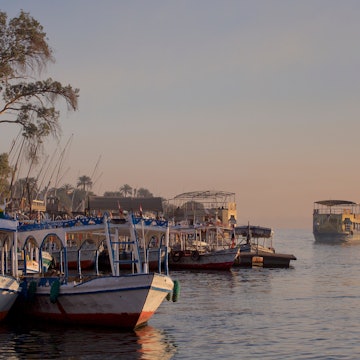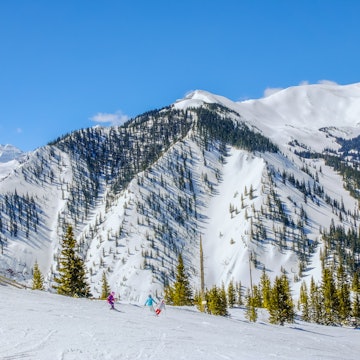

Ever since powered flight joined cartography to provide an accurate picture of our lonely blue globe, the accepted wisdom has been that there are seven continents: Asia, Africa, North America, South America, Europe, Australia and Antarctica.
What if your school books actually got it all wrong, though? There is now strong evidence there’s an eighth continent, mostly under the ocean – and no, it’s not the lost city of Atlantis. It’s one you might actually have visited. It’s called Zealandia.

About the size and shape of Greenland, Zealandia (also called Tasmantis, which frankly sounds a bit more like Atlantis) is approximately 3.5 million square kms (1.35 million square miles) in size. It broke away from the ancient supercontinent Gondwanaland in the early Jurassic period, then later snapped off again from Antarctica and finally jettisoned from Australia about 23 million years ago like an iceberg calving from the Amery Ice Shelf.
Today, this eighth continent is 93 percent underwater, so unless you’re a mermaid the only way to see it is by heading to the South Pacific and visiting the unique islands, separated by vast oceans but connected beneath the seas, that make up the remaining visible part of Zealandia.

New Zealand
The obvious first – and eponymous – choice if you want to make landfall on the mysterious continent of Zealandia is, of course, New Zealand. Home to the vast majority of Zealandia’s human inhabitants, it also happens to be one of the most appealing travel destinations on earth, with the tourism infrastructure to match.
If you nab a window seat flying into Auckland you will see a city built on a landmass made of 50 volcanoes. Across both the North and South Islands you can visit landscapes defined by their volcanic origins, as well as primordial forests and unique wildlife. But for the best insight into what once was, head down to Stewart Island/ Rakiura, New Zealand’s third largest island just across Foveaux Strait from the southernmost tip of South Island.
Stewart Island has only one tiny settlement at the town of Oban (human population 400), while the rest of its 1570 square kms is designated as a national park. From the sea-pounded cliffs on the west to the sheltered harbours where you can sail, kayak and birdwatch on the eastern side – Stewart Island is carpeted with podocarp (the Southern conifers) and hardwood trees like the slow-growing rimu, the kahikatea (also called dinosaur trees) and 1000-year old forest giants, the tōtara. New Zealand’s mainland is also rich with natural Zealandia landscapes, some still actively volcanic. But to get away from the crowd, a tour to Stewart Island is worth the effort.

Norfolk Island
Is Norfolk Island part of Zealandia or an external territory of Australia? That’s up for some debate. Once a British penal colony, this windswept island is largely populated by descendants of HMS Bounty mutineers. It has its own language, Norf’k (also known as Norfuk) a blend of 18th-century English and Tahitian; its own customs; and its own flag. Despite its proud history and self-sufficiency (there are no traffic lights or fast food chains here) and decades of self-determination, in June 2015 the Australian government abolished the Norfolk Island Legislative Assembly and brought the island under the management of New South Wales. This decision to ‘recolonise’ has not been popular.
A 79-year old islander, Albert Buffett, has taken the issue up with the United Nations, arguing that the islanders have been disenfranchised without consultation. Australia has responded with the claim that "there are no indigenous peoples of Norfolk Island or indigenous population on Norfolk Island," arguing that the appeal emotive and riddled with factual errors. The argument is ongoing.
Meanwhile, travelers heading to this tiny outcrop of what is geographically, if not politically, Zealandian, will find a stunning island littered with convict- and colonial-era relics, criss-crossed with walking trails and surrounded by coral reefs. It’s reached by a two-hour plane journey from Sydney, or Brisbane.
You may also like: New Zealand's most wondrous night-time experiences

New Caledonia
Skirted by a UNESCO-protected aquamarine lagoon, New Caledonia’s principal island of Grand Terre is divided by a mountain range of ancient Zealandian rock. This diminutive 18,500 square km (7142.8 square mile) outpost in the southwest Pacific is a paradise of tropical vegetation, sandy beaches, wonderful diving and plentiful resorts and bungalows.
Like Norfolk Island, New Caledonia is an ex-penal colony, and still officially part of an entirely different continent, remaining (for the moment) a French national territory. New Caledonia’s independence movement has so far failed to galvanise the support to split from its colonial ties, but a fresh referendum will be held in September 2020. Despite the political situation, you’re most likely to fly into the capital, Nouméa, from Australia or New Zealand.
The landscapes of New Caledonia hint at a plausible Zealandia beginning – with tall conifers like the New Caledonia sickle pine and red-leaf palms and giant ferns. The cyatheaceae here – the world’s largest tree fern – has trunks more than 20 meters (65 feet) high and fronds which are the largest leaves in the plant kingdom.
These flora are believed to date back to the carboniferous swamps that covered New Caledonia some 275 million years ago. In fact in some of the Kanak languages which are indigenous here, the name for tree fern means ‘the beginning of the country of men’ with creation mythology saying the first humans climbed out of a hollow tree-fern trunk.
You may also like: Inside the fight to save Australia’s precious 'dinosaur trees'

Visiting Zealandia
So while the humans inhabiting these disparate lands argue politics, geologists seem to have found the necessary evidence that there is in fact an eighth continent. The criteria for being classified as a continent, however? Continents need to be large; physically distinct; surrounded by water; and geologically homogenous to some degree.
Zealandia ticks most of those boxes. What makes it different (and all the more intriguing, let’s admit) is this one is mostly submerged under the South Pacific. Whether you visit New Zealand, New Caledonia, and Norfolk Island, however, any of these exposed landmasses offer wonderful potential for terrestrial visits if you want to add Zealandia to your bucket list – even knowing you’re seeing just the tip of the proverbial iceberg.














